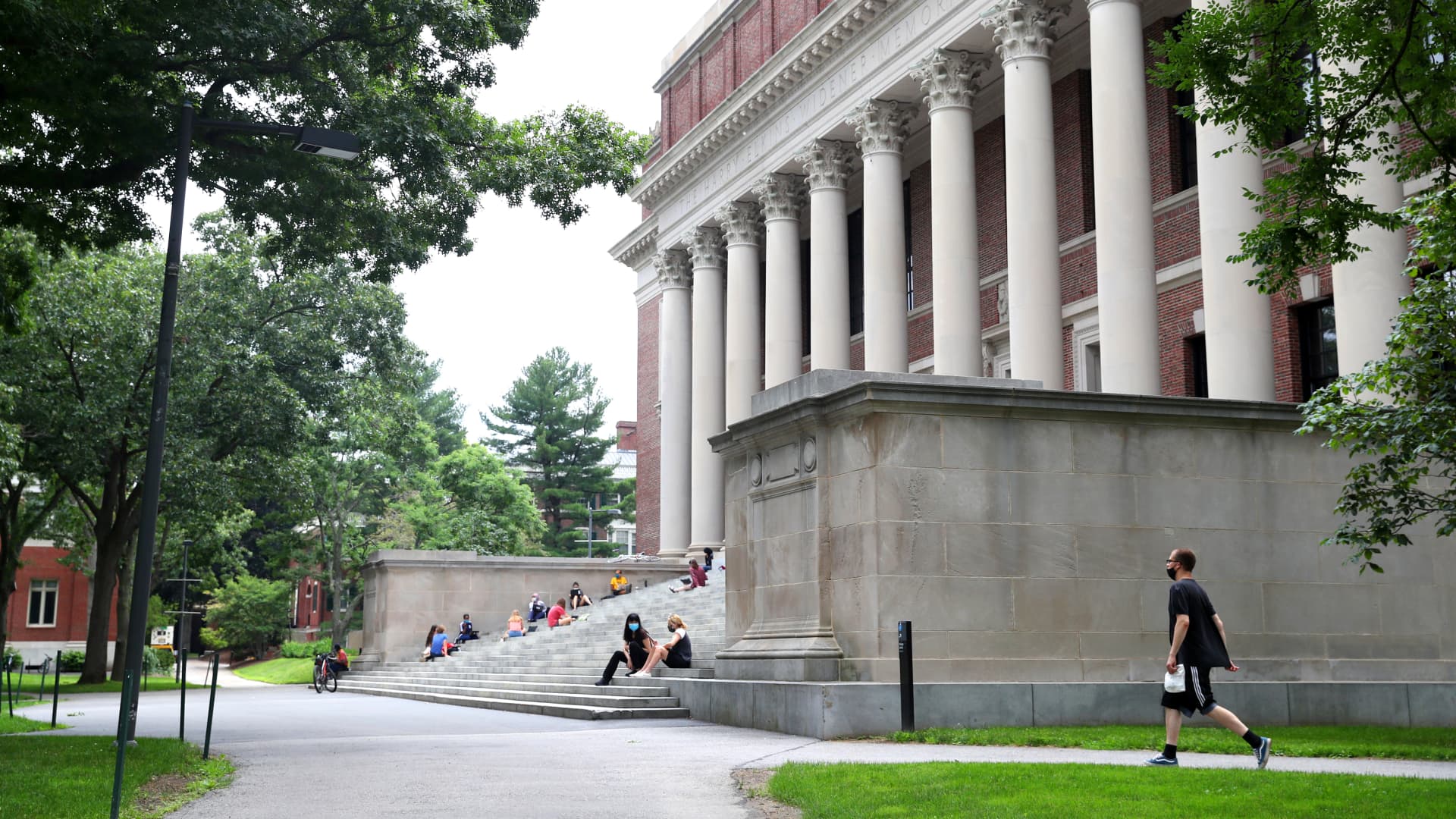This year’s high school graduating class faced one of the toughest college-application seasons on record.
At the nation’s top schools, including many in the Ivy League, “it’s never going to be harder to get in,” said Hafeez Lakhani, founder and president of Lakhani Coaching in New York.
The number of college applicants jumped 20% since the 2019-20 school year, pushing acceptance rates to all-time lows, a report by the Common Application found.
However, the recent application surge at the country’s top colleges and universities could be short-lived, Lakhani said. “Acceptance rates may have bottomed out.”
More from Personal Finance:
SUNY sends acceptance letters to 125,000 high school seniors
4 strategies to avoid taking on too much student debt
These moves can help you save big on college costs
At the most elite schools, this year’s numbers are striking. Harvard University, for instance, received more than 56,000 applications and admitted just 3.4% to the Class of 2027. Other universities, including Princeton, Yale and Columbia, also had acceptance rates below 5%.
But even as more students vie for the fewer available spots at those institutions, enrollment is falling nationwide.
There’s a growing cohort of people who start college but then withdraw, and fewer international students are choosing to study in the U.S. More would-be undergraduates are also deciding to forgo college altogether, citing the high cost among other factors.
Meanwhile, the overall population of college-age students is shrinking — a demographic trend commonly referred to as the “enrollment cliff.”
The number of high school graduates will turn down in 2026 and then “fall rapidly through the following decade,” said Doug Shapiro, executive director of the National Student Clearinghouse Research Center.
How the enrollment cliff affects colleges
“I don’t think we’ll see significant changes in admit rates in the next couple of years,” said Connie Livingston, head of college counselors at Empowerly and a former admissions officer at Brown University.
However, in five to seven years, “those acceptance rates will climb slightly higher,” she predicted.
Those 3% to 4% acceptance rates could shift to 6% to 7%.Connie Livingstonformer admissions officer at Brown University
To be sure, “they’ll remain in the single digits,” Livingston added. “But I think those 3% to 4% acceptance rates could shift to 6% to 7%.”
At the same time, smaller and lesser-known private colleges are struggling to attract applicants, putting them in financial jeopardy. In fact, a growing number have had to shut down entirely. Citing inflationary pressures and sinking enrollment, more schools are set to close this year.
